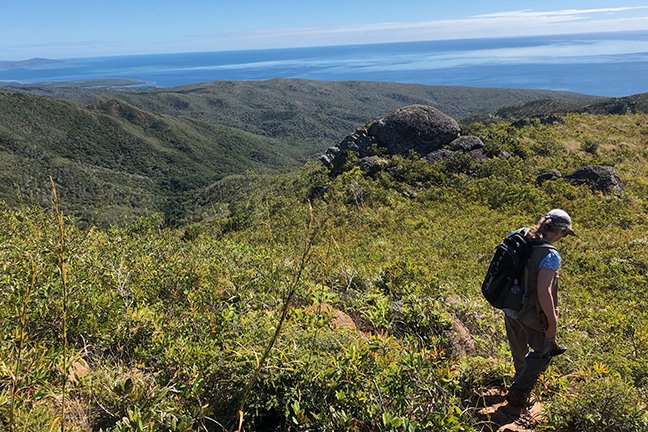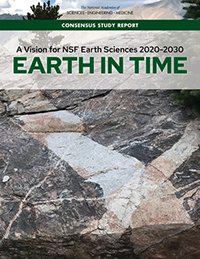CSE professor involved in national recommendations on the future of Earth science

Select committee members present the report to White House and congressional staff
MINNEAPOLIS/ST. PAUL (05/21/2020) — University of Minnesota College of Science and Engineering Professor Donna Whitney was part of a committee appointed by the National Academies that has published a new report outlining the future of Earth sciences over the next decade. A photo that Whitney took while doing field work with one of her graduate students also appears on the report cover.

The report, entitled A Vision for NSF Earth Sciences 2020-2030: Earth in Time, says that to continue Earth sciences’ rapid pace of discovery, the National Science Foundation’s Division of Earth Science (NSF-EAR) should invest in new initiatives, partnerships, and infrastructure in the next decade. A scientifically and demographically diverse group of researchers working in an open environment, individually and collaboratively, will be required for Earth sciences to achieve cutting-edge, successful research and discovery, the report says.
For more than a year, Whitney was part of the committee of about 20 members appointed by the National Academies of Sciences, Engineering, and Medicine that developed the new report. She was also one of only six committee members selected to be part of a briefing team that is presenting the report to the National Science Foundation, the White House's Office of Science and Technology Policy, and congressional staffers.
“Being part of creating and writing this report has been important for me, not so much for my own research, but for me overall as an Earth scientist,” said Whitney, who also serves a head of the University of Minnesota’s School of Earth and Environmental Sciences.

Whitney said the committee read and synthesized a vast amount of recent literature, including white papers from many different Earth sciences communities, received input from hundreds of scientists via an online survey, held town hall meetings at conferences, and met a wide array of geoscientists over the past year and a half. The committee discussed and debated information and ideas, research priorities in the next decade, and recommendations about the instrumental, cyber, and human infrastructure needed to answer these questions.
“It was an intense and interesting immersion in many different aspects of the Earth sciences,” Whitney added.
The report recommends EAR undertake initiatives that provide potentially transformative capabilities and address gaps between existing and needed infrastructure in Earth sciences. Several of these initiatives, such as funding a national consortium for geochronology, focus on supporting collaborative research. The report also recommends that EAR fund facilities that provide new access to technical capabilities and enable advances, such as a near-surface geophysics center.
Whitney said the report is especially important to the University of Minnesota because it has three multi-user facilities funded by NSF-EAR, the most of any institution in the country. These include the Institute for Rock Magnetism, the National Lacustrine Core Facility, and the Continental Scientific Drilling Coordination Office. The Polar Geospatial Center at the University of Minnesota is also funded by a different program within the Geosciences directorate of NSF that has great relevance to the Earth sciences.
For more information and to download the full report, visit the National Academies website.
The National Academies of Sciences, Engineering, and Medicine are private, nonprofit institutions that provide independent, objective analysis and advice to the nation to solve complex problems and inform public policy decisions related to science, technology, and medicine. They operate under an 1863 congressional charter to the National Academy of Sciences, signed by President Lincoln.
